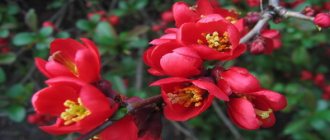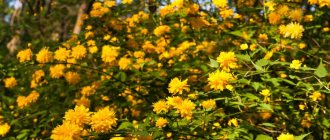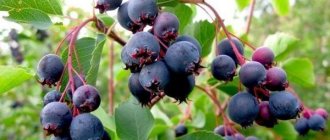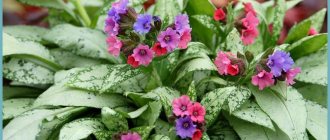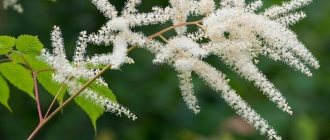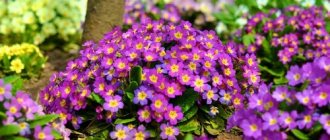Home » Garden and vegetable garden » Garden of Health
Vladimir 03/16/2020
2461 Views
Quince
Quince is a tall tree with beautiful, entire-edged foliage, large flowers and pear- or apple-shaped fruits. In ancient times, quince was considered a symbol of love and fertility. Under natural conditions, wild representatives of the genus can be found in eastern Russia and even in Siberia. A fruit tree with fragrant fruits has become widespread throughout the Caucasus, Central Asia, Moldova and Crimea. Even a novice gardener can plant quince on a personal plot, since the fruit tree is not considered a difficult crop to care for.
Description of the exotic shrub Japanese quince
Chaenomeles japonica is a spiny deciduous or semi-evergreen shrub native to East Asia. It has played a large role in Japanese culture and horticulture for thousands of years.
The genus Chaenomeles consists of only three species: C. cathayensis, C. Japonica and C. speciosa. In this article we will describe the most popular species of Japanese quince (Chaenomeles japonica). This small shrub (0.6–1.2 m in height) grows in central and southern Japan at an altitude of 100–2100 m on hillsides, as well as on the banks of rivers and lakes. In the scientific literature and other sources you can also find other names for this species - Chaenomeles Mauleya (dwarf variety), Flowering Quince.
Photo of Japanese Quince variety Crimson and Gold
The shrub usually has a rounded deciduous crown. Plants grow densely, creating an impenetrable barrier. Their crown is formed by oval, shiny, dark green leaves with jagged edges. Leaf size up to 9 cm in length. Some varieties of Japanese Quince can be creeping, but most are erect bushes.
The flowers appear in early spring before the leaves, 3-4 cm in diameter, in bright shades of soft pink, rich red, coral red and pure white. The flowers are hermaphrodite (have both male and female organs) and are pollinated by bees.
The edible fruit, up to 5 cm in diameter, is quite aromatic and looks like a small apple; some varieties have much larger pear-shaped fruits. They are unpleasant to eat raw, they have the taste of unripe apple mixed with the acidity of lemon, although after the first frost the taste becomes milder.
Japanese quince has become a popular ornamental plant in parts of Europe and North America, where it is grown in gardens both for its colorful spring flowers and as a thorny hedge.
Types: classification
Quince in bloom
The original classification included 3 types:
- Japanese
- Chinese
- evergreen
Over time, this classification was revised and only 1 species was identified: common quince.
Common quince
Quince pear-shaped
A single species includes 5 garden groups or varieties. All trees differ from each other in a number of biological features.
The first two are considered varieties of decorative quince: this is pyramidal - a tree with a pyramidal crown, and marble - with a variegated surface of leaves, densely covered with spots of yellow or white.
Garden quince is distinguished separately. It includes:
- pear quince
- apple-shaped
- Portuguese
Let's look at the representatives of the species in more detail.
Decorative quince
Ornamental quince All varieties included in this group have good resistance to drought, easily tolerate bad weather conditions, and can be grown in cities: they are not afraid of air pollution and dust.
In early spring, decorative quince looks very elegant: it is completely covered with spectacular flowers that stay on the plant for about a month.
In autumn, the bush is decorative due to its red foliage and bright yellow fruits.
All varieties must be trimmed to give the crown the desired shape.
Ornamental quince is a promising plant not only for decorating a summer cottage, but also for landscaping city parks.
Garden quince
Garden quince The group includes more than 400 varieties of fruit trees, but no more than 39 can grow in our climatic conditions.
Characteristics of garden quince:
- good winter hardiness
- high yield
- possibility of long-term storage of fruits
- good transportability
- disease resistance
Based on the shape of the fruit, quince is divided into pear-shaped and apple-shaped. According to the shape of the crown, the classification is as follows:
- spherical
- pyramidal
- broad pyramidal
The apple-shaped quince is considered the fastest ripening, while the pear-shaped quince has sweet and juicy fruits.
Planting and caring for the exotic crop Japanese quince
One of the reasons for the popularity of this exotic is its ease of care. We will describe in more detail how to grow Chaenomeles japonica in the garden.
Where to plant shrubs
The plant tolerates full shade, but requires a sunny position for best fruiting. Make sure that there are no strong drafts at the planting site. Chaenomeles are often planted in a row to form a hedge. They need a lot of space for their crown. The optimal planting location will be the southern side of your site, protected from the winds.
Flowering Quince has large spines, so it is best placed away from high traffic areas where it can easily injure passersby.
Soil requirements
Japanese quince easily adapts to any sufficiently fertile soil and can grow well even on heavy clay soils. Like most plants, they prefer well-drained loam. Chaenomeles japonica can tolerate waterlogged soils, but not for long periods. Avoid soil with high pH (alkaline), which can cause chlorosis.
Sowing Japanese Quince seeds for seedlings
To plant shrubs, you can use purchased seedlings or grow them from seeds. If you are collecting seeds from an existing plant, they will need to be cold stratified before sowing. To do this, then place it in some peat moss or soil mixture in the refrigerator for three months.
Photo of Japanese Quince seeds
Seeds can be sown in late January or early February and should germinate within 30 days. For sowing, take trays with a soil mixture of 50% sifted compost and 50% river sand. Germinated seedlings should be moved to deep seedling pots. The largest plants can be planted in permanent places in the summer. The small plants should spend their first winter covered and can be planted out the following spring.
Planting Chaenomeles seedlings in the garden
If you plan to plant seedlings in spring, prepare the soil in the fall. Completely eliminate weeds in the selected area, add a little sand, potassium and phosphorus fertilizers (per 1 m² - 40 g) to the ground. The optimal period for planting is in the spring until the buds begin to bloom. It is not recommended to plant flowering Quince in the fall, as the seedlings do not take root well.
If you are planting a shrub as a future hedge, the distance between seedlings should be at least 50 cm. As an ordinary ornamental shrub, plant a seedling at a distance of 1.5-2 m from other plants.
Dig a hole twice as wide as the root ball and deeper than the seedling or seedling pot. Place the plant in the hole and cover with soil. When planting, make sure that the root collar is at ground level. Water the soil well. During the first year, while your young plant is taking root, you will need to water the bush when the top part of the soil is dry to a depth of 2 cm. It is advisable to mulch the planting site.
You might be interested
The best perennial bush flowers for the garden: features and selection rules
We use decorative coniferous shrubs in garden landscape design
Choosing the best shrubs for hedges
Cooking recipes
Japanese quince tincture is prepared using an alcohol solution or vodka. For this, only ripe, aromatic fruits are taken. They need to be washed, removed from the seeds inside and chopped. Then pour it into a glass jar and add alcohol so that it completely covers the prepared mass. The jar should be closed with a nylon or tin lid and hidden in a dark place for a period of 3 weeks. After this time, add sugar to the mixture, stir to dissolve and leave for another 1 week.
Then you need to strain the tincture, you can add vanilla sugar for flavor and pour it into glass bottles. The prepared tincture is stored in a dark place at temperatures up to 20C.
The ratio of quince - vodka - sugar is: 500g - 800ml - 150g.
What are the features of caring for Chaenomeles japonica?
The first year after planting is the most critical, since during this period the plant is vulnerable to disease and lack of care. To prevent the young shrub from dying, you need to pay a little attention to it.
Temperature
If you live in a cool climate, Japanese Quince is ideal for your garden as it is frost hardy and can survive temperatures as low as -30°C. But the plant finds it difficult to grow in regions with very hot climates. Many plants suffer from sunburn if they are exposed to temperatures above 30°C for several days.
Watering and mulching
Although it is a fairly drought-tolerant crop once established, young plants need to be watered from time to time.
It is worth watering in the morning so that excess moisture has time to dry before evening. Try not to get the leaves wet. Sprayed water can cause stains on the leaves, and they may also fall off if they are often wet. Mulch the base of Japanese Quince bushes to suppress weeds and maintain soil moisture.
Fertilizer
It is advisable to feed Chaenomeles japonica with a slow-release all-purpose fertilizer in early spring before new shoots appear, or add compost as a tree trunk fertilizer. Gently spread the fertilizer into the soil around the plant. Don't let the fertilizer touch the leaves - it can scorch the leaves. Then water the soil thoroughly so that the fertilizer is distributed to the roots.
Trimming
To maintain the attractive shape of the shrub, it requires regular and proper pruning. This plant can easily turn into a shapeless, overgrown bush if annual pruning is neglected. It is worth remembering that flowers form on old wood. Therefore, plan to prune in late spring, after flowering has ended.
There are three types of Chaenomeles haircuts:
- Sanitary . Carried out in the spring after flowering, all damaged, dry branches are removed. A saw and pruning shears are used for the work. The cut areas are treated with garden varnish.
- Forming . The formation of a bush begins only after 4-5 years of its growth. But every year it is necessary to remove part of the root growth, leaving a maximum of 2-3 offspring. The procedure is also performed in early spring. The most valuable are considered to be shoots that are horizontally located 30-40 cm from the ground. Shoots that grow upward need to be eliminated.
- Rejuvenating . Used for bushes that have reached 8 years of age. Branches older than 5 years of age are removed, leaving a maximum of 12-15 strong shoots. This will give your flowering Quince a neat look.
Is it possible to replant Chaenomeles japonica?
A shrub is not easy to replant if you plant it in the wrong place. The root system is very deep, and if you decide to dig up the bush when moving it, the parts of the root left in the ground will often grow back. It should also be taken into account that the branches of Japanese Quince are prickly. An adult plant does not tolerate the transplantation procedure well.
If the need for transplantation nevertheless arises, first you need to prepare a new place. It is best to replant shrubs during the dormant period from late winter to early spring, when the danger of frost has passed.
- Dig a hole two to three times wider than the root ball of the Quince bush.
- Dig up your plant from its old location. Outline an area approximately twice the size of its root ball and start digging from the boundary. As you go deeper into the soil, get closer to the root ball. When you start to see roots, work your way down. Pull the bush by the base to free it from the hole. If some of the roots are deep in the ground, cut them off with a flat spatula. Then pull Quince completely out of the hole.
- Move it to a new location. Place the shrub in the new hole at the same depth at which it was planted in the old place. You can tell this by the soil line on the trunk. Spread out the roots with your fingers.
- Fill the hole with soil. Once the hole is filled and compacted, water it to allow the soil to settle naturally. Add water until the soil is saturated with moisture.
- Mulch the soil around the transplanted bush to a thickness of 5-7 cm.
For which regions of the Russian Federation is the plant suitable?
When growing ornamental quince, it is worth taking into account regional characteristics, since the plant loves areas where mild, even climatic conditions prevail, it can tolerate temperature drops down to -30°C, but is at the same time sensitive to frosts in the spring, which provoke freezing of buds and young shoots.
Middle lane .
Due to the large number of hybrids that are frost-resistant, this plant is grown both in the south and in the middle zone. It is important to choose early ripening varieties that have time to ripen before the onset of cold weather.- Moscow region. The soil and climate of the Moscow region requires a responsible approach to the issue of choosing a quince variety.
To plant plants in the Moscow region, it is better to take low-growing dwarf varieties, interspecific hybrids that are not afraid of frost.
Such bushes overwinter without additional shelter, but in a harsh winter with little snow, fruit buds and young shoots may suffer. Therefore, it is better to cover the plant for the winter with suitable material.
- Krasnodar region . In the conditions of the foothill zone, any varieties and hybrids of crops are grown.
- Ural and Siberia . Ornamental quince can also decorate the gardens of the Urals and Siberia, due to the plants’ good resistance to frost. The main thing is not to forget to insulate the shrubs for the winter with any breathable covering material.
What varieties of Japanese quince are suitable for the Moscow region can be found out in more detail in this article.
If you adhere to the rules of agricultural technology when planting and carry out appropriate care measures, then quince will delight you with its luxurious flowers, glossy foliage and plump fruits in any region of the country.
Reproduction of Japanese Quince
There are three methods of propagating Chaenomeles japonica - seeds, cuttings and laterals. We wrote about the first method above.
Lateral bends
In the spring, when the plant is actively growing, choose a long, flexible branch that can be easily bent toward the ground without breaking it. Dig a trench 8 cm deep and remove leaves from a 12 to 18 cm section of the stem that you bury in the ground.
Bury this part of the stem, leaving the branch connected to the mother plant. You may need to weigh it down with bricks or use clamps to hold the branch in place. Water well and keep the soil evenly moist until it takes root.
After six to eight weeks, you will carefully turn back the soil and check to see if the stem has taken root. If you see young roots, you can safely cut a branch from the mother plant and dig up the newly rooted plant to replant in another location.
Propagation of Japanese Quince by cuttings
It is much easier to propagate flowering Quince from root cuttings than from stem cuttings. This can be done at any time of the year. The plants also produce side branches that can be dug up and replanted. To make a root cutting, find a young new stem at the base of the plant and carefully dig it up, leaving as much of the root system intact as possible.
Plant the root cutting in a container at least 10cm deep in a well-draining potting mix and keep it moist until you see the cutting begin to grow. Afterwards it can be transplanted into open ground.
To propagate Quince from stem cuttings, be sure to use stems from the previous growing season. Find stems the diameter of a pencil and cut them to about 15-20cm in length. Remove the lower leaves from the branches, leaving the upper ones intact. Dip the cuttings in rooting hormone, then plant them in a container of all-purpose sandy soil and water well. Cover the pot with plastic wrap and store in a bright, warm, humid place away from direct sunlight. When the cuttings take root and begin to grow, they can be replanted.
Beginning of flowering
Typically, quince begins to bloom in May-June, when the average daily temperature reaches 17 degrees and above. Depending on a number of factors, the deadline may be shifted:
- Region . Quince is a heat-loving plant and will bloom only after warm temperatures have persisted for several weeks. Therefore, in the northern regions, where stable 17 degrees are observed only in early to mid-June, flowering can begin even in early July.
- Growing conditions . Incorrect planting location, dry mail or air can cause delayed flowering.
- Variety . When the first flowers begin depends also on the plant variety. For example, tree species cultivated in Central Asia are distinguished by earlier flowering.
Additionally, the presence of pests and diseases in quince can affect the flowering period.
Common pests and diseases of Chaenomeles
Aphids can seriously damage young branches and leaves, but this is not dangerous to the plant. Other insect pests that can be found on branches and leaves are scale insects and spider mites. They can be combated with insecticides or folk remedies.
Chlorosis (yellowing of foliage) can occur in high pH (alkaline) soils. In this case, you need to slightly acidify your soil.
If you notice dark green spots on the leaves that turn a dark rust color over time, your flowering quince may have apple scab, an infection caused by the fungus Venturia inaequalis. The fungus overwinters in vegetation debris and usually attacks in warm, humid weather. In this case, it is necessary to treat the plant with pesticides.
Difficulties
Ornamental quince is an unpretentious plant, but sometimes even experienced gardeners encounter some problems when growing it:
- Unsuitable soil or poor-quality planting material can cause poor tree development.
- In the absence of pollinators nearby, which could be another crop variety or a graft on the same tree, quince does not bear fruit.
- Close placement of groundwater to the soil surface can cause yellowing of foliage.
- Sudden frosts in the spring lead to a lack of flowering of quince.
It is important to pay attention to the ornamental crop in order to help it in time if difficulties arise during cultivation.
How Japanese quince is used in landscape design
Chaenomeles japonica is valued for its decorative properties. It is planted to create hedges and placed along garden alleys, not far from gazebos. Shrubs are also used to form gardens in Japanese and English styles, combined with coniferous crops.
The most common tandem is flowering Quince and Barberries; shrubs with Peonies and different types of Juniper look good. If you grow a fruiting variety, you can either leave the fruit for the birds or try your hand at making Quince jam.
Application
In cooking
Wonderful jam, syrup, jelly and liqueur are prepared from the aromatic fruits of Japanese quince. You can make compotes from dried fruits. You can also prepare sweet pastries with the addition of quince. But in addition to sweet products, many meat dishes are prepared with quince.
In medicine
This fruit crop is widely used in folk medicine. The juice of ripe fruits has an anti-inflammatory, immunomodulatory and diuretic effect on the body. Also, quince fruits are considered effective antioxidant and hemostatic, choleretic and diuretic agents.
When losing weight
Quince is a fairly low-calorie product, but it quickly saturates the body without harming the figure. Also in dietary nutrition, the fruit is used to prepare decoctions and teas. Quince is also useful to eat baked.
At home
Gardeners use Japanese quince as an ornamental shrub. It will perfectly decorate the garden and terrace.
In cosmetology
Quince fruits are used to make lotions, masks and decoctions. The vitamins and amino acids contained in quince significantly improve the condition of hair and skin.
Popular varieties of Japanese quince
Chaenomeles is distinguished by many artificially bred varieties. We will describe several of the most popular varieties, which will allow you to choose the most optimal plant option suitable for your garden. Let's look at the most popular:
- Chaenomeles Japanese variety Crimson and Gold . The bush, which has a branched appearance, grows up to 120 cm. The buds are a rich red hue with yellow stamens. Does not require pruning and is often used to form hedges.
- Quince variety Simoni. This bush has an almost circular configuration and lodging shoots. The inflorescences are raspberry-red, the fruits are green.
Quince japonica Simoni - Jet Trail. It has no thorns and is distinguished by the curved shape of its branches. The flowers are pale white.
- Chaenomeles variety Vesuvius . It is characterized by a wide, spreading crown, the height of the bush is 1 meter. There are a lot of inflorescences, they are bright red in color.
- Pink lady . Characterized by pink flowers. The height of the variety is up to 150 cm.
Chemical composition
Quince fruits contain sugars, organic acids, pectin, proteins and fiber. Ripe fruits contain fructose, glucose, sucrose and vitamins: C, Bh B2, P, PP and A. They contain a lot of potassium - 144 mg/100 g.
Active ingredients
The fruits contain carbohydrates, vitamins C and B1, pectin, lactones, tannins, essential oil, hydrocarbons, esters, aromatic compounds, sulfur-containing compounds, triterpenoids, proanthocyanidins, steroids and higher fatty acids (palmitic, oleic, linoleic, etc.), higher aliphatic carbohydrates and alcohols, iron, copper.
Mucilage (mainly in the epidermis), amygdalin glycoside, sugars, proteins and fatty oil were found in the seeds.
Quince leaves contain carbohydrates, triterpenoids, resins, alkaloids, cyanogenic compounds, vitamins C, K, catechins, phenolcarboxylic acids, tannins, flavonoids, leukoanthocyanidins, lipids;
What does the tree look like?
There are several trees and fruits that are similar to the common quince. And in order to be able to distinguish them, you need to know the characteristics of these plants.
Among them:
- Medlar. A medium-sized deciduous tree 2.5-4 m high. It is a representative of the Rosaceae family. The fruits are flattened and round in shape and ripen in October. The diameter of the fruit is about 5 cm, the color is yellow-brown.
The taste is tart and astringent, so it is recommended to harvest after the first frost. German medlar helps in the treatment of hypertension, asthma, and diabetes.
- Chaenomeles . This crop is also called Japanese quince. It is a spreading shrub, up to 2.5 m high. It is highly decorative and is used as an element of landscape design. The fruits are small and resemble quince in appearance. The taste is sour, so the fruit is only suitable for processing. Chaenomeles flowers appear before the leaves bloom.
The concept of ordinary, oblong and garden
This culture belongs to the Rosaceae family .
In the wild, only one species of plant is found - the common or oblong quince (Cydonia oblonga). On its basis, two other groups were obtained, namely garden and ornamental. The first ones differ from each other in the shape of the fruit. It can be:
- pear-shaped;
- apple-shaped;
- ribbed
Decorative forms of culture are used for landscaping areas, personal plots, and parks. This type of quince can be marbled or pyramidal. Decorative forms are characterized by increased drought resistance and quickly recover after cutting and crown formation. They are not picky about soil composition and can easily tolerate polluted air.
Ornamental quince species also bear fruit, but in terms of taste they are significantly inferior to garden ones.

